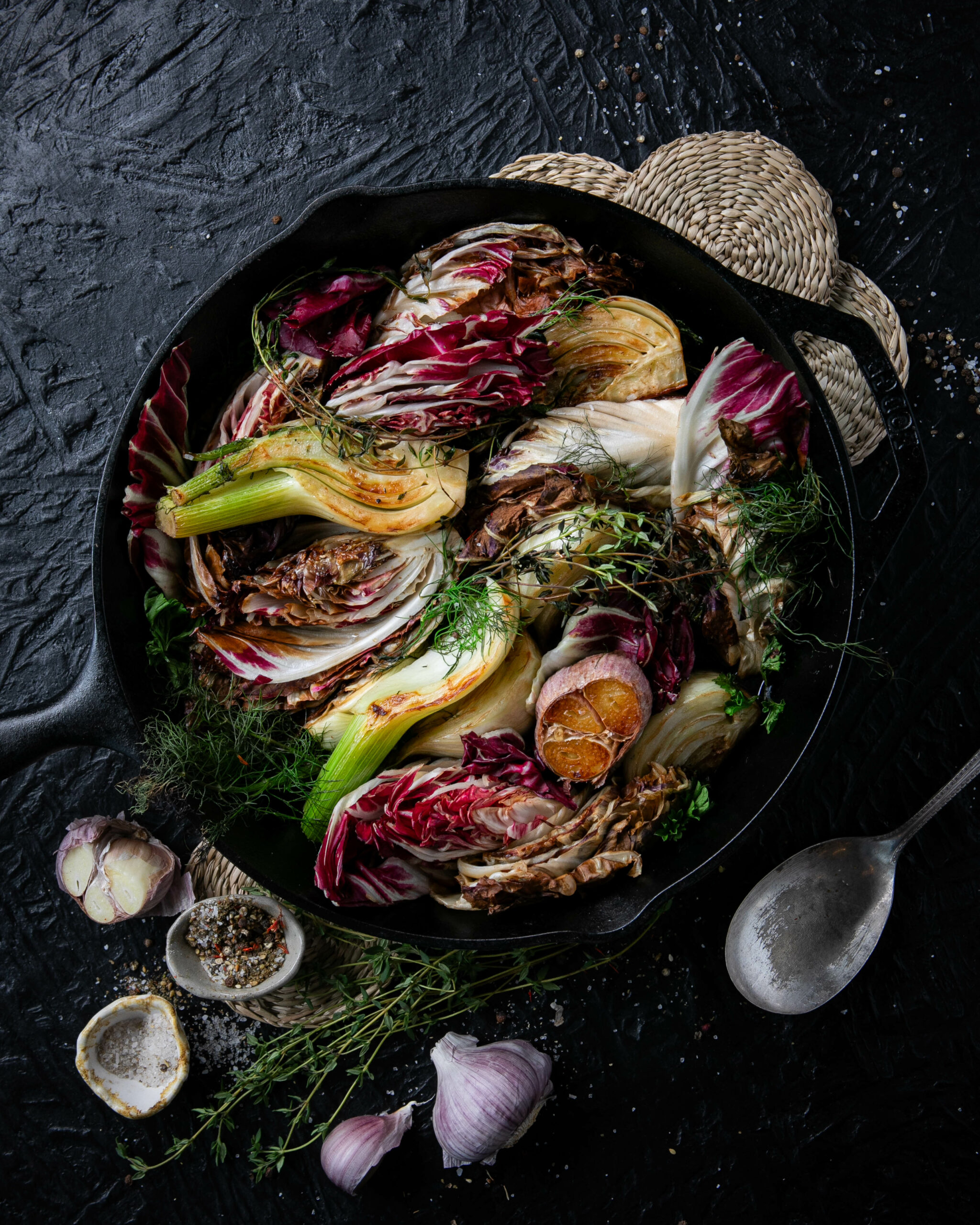It wasn’t so long ago that you couldn’t give cast-iron cookware away. Now it’s the darling of home and professional cooks alike. Regional Editor Julia Platt Leonard meets a new generation of cast-iron cookware makers to find out why.
September 15, 2013, was a bad day for Dennis Powell. That’s the day he dropped his grandmother’s cast-iron skillet and it fell down the stairs, destroyed. When Powell calls it a “bolt of lightning disaster,” he means it: it was one of only two things he had of hers (the other was her butcher’s knife). Holding her pan and using it was a daily connection to her.
Not only would a brand-new pan lack this connection, new pans just aren’t as good as ones made in the late-19th and early-20th centuries, he says. The difference? According to Powell, it’s all in the finish. “A lot of people describe it as being a velvety finish,” he says. “It’s not exactly smooth. It’s certainly not rough. It’s certainly not a pebbly finish that people associate with cast iron today.”

Powell set off on a quixotic quest to figure out how to make a cast-iron pan as good as his grandmother’s. And he’s not alone. There is a whole new generation of cookware makers who feel that progress hasn’t been kind to the cast-iron pan, including makers like Chris Muscarella who started Field Company with his brother Stephen. They were both at loose ends, considering their next career venture. “We’re hanging out and we’re cooking and we’re talking about things we might do,” he says. “We have some vintage cast iron that is really beautiful that had been family pieces handed down by mothers, grandmothers.”
They decided they wanted to add a large pan to their collection and bought a new one. “I was kind of shocked at the (inferior) quality of that one versus the vintage cast iron,” he says. They decided to create a pan like their grandmothers used. “I wouldn’t say we went into this with a lot of commercial intent. I think we fell into it organically and loved it.”
There are few things that improve with age … few things that will work better next year–or in two years or even 10–than they do today … few pieces of kitchen kit that you’d proudly pass on to your kids. The exception? Cast-iron cookware. With proper care (more on that later), cast iron will last lifetimes. With age and seasoning, cast iron is naturally non-stick. It’s a versatile workhorse (think frying, braising, baking) that earns its place in your kitchen.
Why did it fall out of fashion? The advent of Teflon-coated pans in the 1960s didn’t help. We started coveting shiny non-stick pans and ditched our grandmother’s cherished skillet at the charity shop. Modern manufacturing didn’t help either. “Cast iron kind of got cost-engineered to be as cheap as possible and that was its primary benefit,” Muscarella says.
Like Muscarella, Powell didn’t have ambitions to start a cast-iron company. “Initially I just wanted to make a couple of pans like a sculpture to give to my kids.” He hired a company to help him create his dream pan (“They thought I was ridiculous,” he says). When they told him there was no way they could get the cast iron as thin as he wanted and with the perfect surface he demanded, he wasn’t deterred. “What if I pay you to fail?” he asked.
After failing and failing again, he miraculously got the pan he was looking for. The good news is that we can share his success with a piece from his Butter Pat line of cast-iron cookware. They have lovely names like the 14-inch skillet called the Lili (named after his wife’s grandmother) or the 4.5-quart flat-bottomed Homer (named after his friend the chef “Homer” Sean Brock).
Cast-iron pans aren’t cheap but nor should they be. Powell compares a cast-iron pan the cost of a nice hotel room: one lasts for a night and the other for a lifetime. Actually longer. “We long for that touch, for our family and our ancestors and having something that someone else has used, I think, is meaningful,” he says. Cast iron has soul.
HOW TO CARE FOR CAST IRON
- Most cast-iron cookware comes pre-seasoned and ready to use. Remember that the more you use cast iron, the better it performs as it builds up a lovely, non-stick patina.
- Avoid acidic foods like tomatoes, wine, and vinegar, especially early in the life of your pan. Later on, a little acid isn’t a problem, but choose another pan for your signature tomato sauce.
- To soap or not to soap. That is the (hotly) debated question. Using dishwashing liquid every now and then won’t kill your pan but you probably don’t need it, so why bother? Instead, scrape off any cooked-on food, wash it in warm water and dry, dry, dry because …
- … Water is cast iron’s enemy. Don’t leave it to air-dry and don’t even think about putting it in the dishwasher. Dry it with a clean kitchen towel and then rub in a small amount–we’re talking a quarter of a teaspoon–of a neutral oil such as sunflower or grapeseed oil and it’s ready to go.
- Don’t ditch a seriously rusty pan. Remove the rust with a copper-wire scrubber, wash and dry it, and then rub it with a small amount of oil. Place the pan upside down in a 350-degree oven with a baking pan or piece of aluminum foil underneath to catch any drips. Bake for an hour, turn off the oven and let it cool, and voilà! Your pan is as good as new.
Story and Recipes by Julia Platt Leonard / Styling by Anna Calabrese / Photography by Laura Petrilla
Subscribe to TABLE Magazine‘s print edition.


